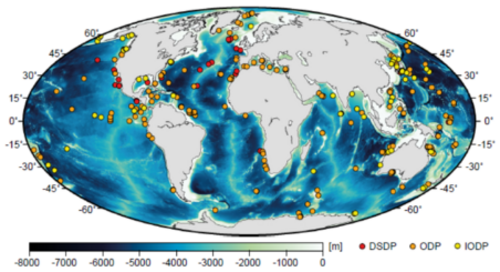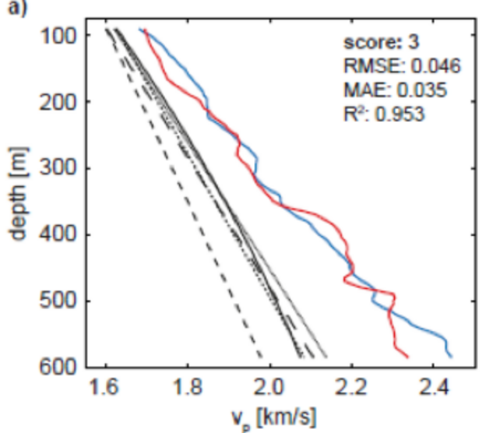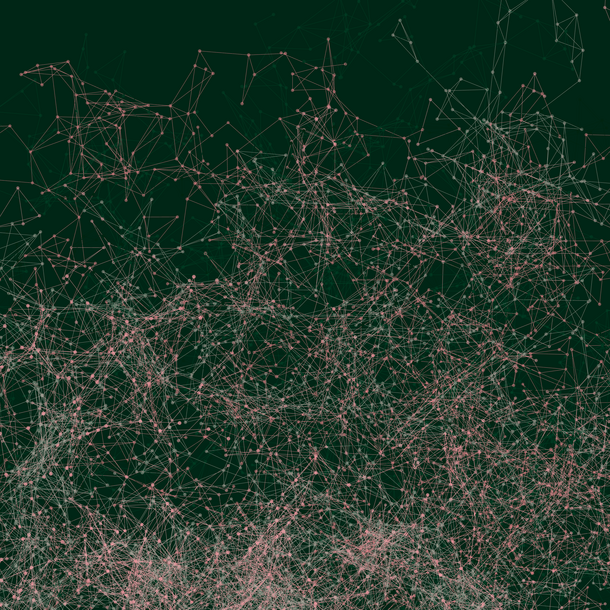Machine Learning for Petrophysical Predictions
Doctoral Researcher:
Yousef Razeghi, GEOMAR Helmholtz Centre for Ocean Research Kiel, yrazeghi@geomar.de
Supervisors:
- Prof. Dr. Christian Berndt, GEOMAR Helmholtz Centre for Ocean Research Kiel, Marine Geodynamics, cberndt@geomar.de
- Prof. Dr. Wilhelm Hasselbring, Kiel University, Software Engineering Group, hasselbring@email.uni-kiel.de
Location: Kiel
Disciplines: marine geology and geophysics, computer science
Keywords: machine learning, physical property estimation
Motivation: The petrophysical properties of rocks below the seafloor are very difficult and expensive to measure. Constraining these properties has been one of the main aims of the Integrated Ocean Drilling Program (IODP) - arguably the most successful geoscience program ever. However, even after 50 years of drilling there are only about 1500 scientific drill holes in the world’s ocean where we really know what is underneath the seafloor. This hampers a quantitative understanding of Earth processes, because simulations require robust parameterization of the physical properties. This PhD project will lead to a step increase in the quality of numerical predictions of physical properties that are the basis for the assessment of hazards such as large earthquakes, landslides, and tsunamis, to find new resources such as hydrocarbons and marine minerals, and to constrain the role of subsurface processes in climate change.
Aim: IODP and its predecessors have collected more than 1000 high-quality borehole cores and wireline logs from all parts of the world’s oceans. These data provide a unique data base for deciphering petrological variations. In this PhD project we aim to adapt and test various machine learning approaches to make general predictions of the variation of petrophysical parameters such as seismic velocity, density, shear strength, and electrical resistivity depending on geological boundary conditions such as distance to the shoreline, sediment thickness or age of the crust. Supervised and unsupervised machine learning through random forest methods or neural network analysis will improve the prediction of petrophysical parameters in undrilled regions of the ocean both for providing constraints for processing of geophysical data such as seismic reflection data and controlled-source electromagnetic data and to parameterize Earth models. In addition, the analysis of these data through machine learning may reveal previously unknown links between the physical properties and various geological boundary conditions. Such links will serve as starting points for research programs that can reveal the underlying earth system processes. The work will be based on a pilot study that we have conducted which has already led to promising results when predicting seismic velocity variation with depth (Dumke and Berndt, subm.).
Objectives: (1) The first objective of this doctoral research project is to evaluate and adapt different machine learning techniques for optimizing physical parameter models based on sparse, large-volume data (borehole logs, core measurements, and geophysical measurements). A particular focus will be the introduction of aleatory and epistemic uncertainties into the prediction schemes that have been used so far. (2) The second objective is to apply such models for predicting different physical parameters to improve predictability of physical properties such as density or electrical resistivity of hard rocks and sediments on a global scale.
References:
- Attias, E., Weitemeyer, K., Minshull, T. A., Best, A. I., Sinha, M., Jegen-Kulcsar, M., Hölz, S. and Berndt, C. (2016) Controlled-source electromagnetic and seismic delineation of sub-seafloor fluid flow structures in a gas hydrate province, offshore Norway. Geophysical Journal International, 206 (2). pp. 1093-1110. DOI 10.1093/gji/ggw188
- Dumke, I. and Berndt, C. (submitted) Prediction of seismic p-wave velocity using machine learning. Solid Earth.
- Johanson, A., Flögel, S. Dullo, C., Linke, P. and Hasselbring, W. (2017) Modeling Polyp Activity of Paragorgia arborea Using Supervised Learning. Ecological Informatics, 39, pp. 109-118, 2017. DOI 10.1016/j.ecoinf.2017.02.007
- Jegen, M., Avdeeva, A., Berndt, C., Franz, G., Heincke, B., Hölz, S., Neska, A., Marti, A., Planert, L., Chen, J., Kopp, H., Baba, K., Ritter, O., Weckmann, U., Meqbel, N. and Behrmann, J. (2016) 3-D Magnetotelluric










